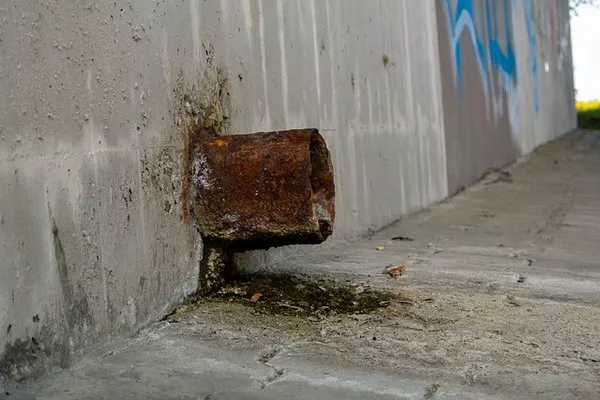Wastewater treatment is an essential process for maintaining the health of our ecosystems and ensuring the availability of clean water for various uses. The primary goal is to remove contaminants from sewage and industrial effluent, converting it into an effluent that can be safely returned to the environment or reused. Wastewater treatment typically involves five stages: preliminary treatment, primary treatment, secondary treatment, tertiary treatment, and sludge treatment. Each stage is designed to progressively remove different types of pollutants, ensuring that the final discharge meets environmental standards.
1. Preliminary Treatment
Objective: The preliminary treatment stage aims to remove large solids and debris that can damage or clog subsequent treatment equipment.
Process:
This stage involves several mechanical processes, including:
Screening: Wastewater passes through screens with different mesh sizes to trap and remove large objects like sticks, rags, and plastics.
Grit Removal: Grit chambers or sedimentation tanks allow heavier particles, such as sand and gravel, to settle out. This is crucial for preventing abrasive damage to pumps and other machinery.
Flow Equalization: This process involves holding tanks that help regulate the flow rate of incoming wastewater, preventing surges that could overwhelm the treatment facility.
Importance: Preliminary treatment is critical for protecting downstream equipment and improving the efficiency of subsequent treatment stages by reducing the load of large and coarse materials.
2. Primary Treatment
Objective: The primary treatment focuses on removing suspended solids and organic matter from the wastewater through physical processes.
Process:
This stage primarily involves sedimentation:
Sedimentation Tanks: Also known as primary clarifiers, these tanks allow solid particles to settle to the bottom, forming sludge, while lighter materials such as oils and greases float to the surface and are skimmed off.
Sludge Removal: The settled sludge at the bottom is periodically removed for further treatment.
Importance: Primary treatment significantly reduces the amount of organic matter and suspended solids, which can cause oxygen depletion in receiving waters and hinder biological treatment processes.
3. Secondary Treatment
Objective: The secondary treatment aims to remove dissolved and suspended organic matter that escaped primary treatment, using biological processes.
Process:
This stage relies on microorganisms to break down organic pollutants:
Activated Sludge Process: This involves aeration tanks where air is pumped to encourage the growth of aerobic bacteria, which consume organic matter. The mixed liquor (a combination of wastewater and biological solids) then moves to secondary clarifiers, where biomass settles as sludge.
Trickling Filters: Wastewater is distributed over a bed of media (such as stones or plastic) covered with a biofilm of microorganisms. As the wastewater trickles down, the biofilm breaks down organic pollutants.
Bio-Towers: Similar to trickling filters but typically taller and packed with media, bio-towers provide a larger surface area for microbial growth and organic matter breakdown.
Importance: Secondary treatment significantly reduces the biochemical oxygen demand (BOD) and total suspended solids (TSS), ensuring that the treated water meets environmental discharge standards.
4. Tertiary Treatment
Objective: Tertiary treatment, also known as advanced treatment, aims to remove remaining inorganic compounds, nutrients (like nitrogen and phosphorus), and pathogens, providing an additional level of purification.
Process:
This stage can involve a variety of physical, chemical, and biological processes:
Filtration: Sand filters, membrane filters, or other fine filtration systems remove residual solids and microorganisms.
Disinfection: Chlorination, ultraviolet (UV) radiation, or ozone treatment are used to kill or deactivate pathogens, ensuring the water is safe for discharge or reuse.
Nutrient Removal: Biological processes (such as nitrification and denitrification) and chemical processes (like precipitation and adsorption) are employed to remove nitrogen and phosphorus, which can cause eutrophication in receiving waters.
Importance: Tertiary treatment is crucial for producing high-quality effluent that can be safely discharged into sensitive environments or reused for purposes such as irrigation, industrial processes, or even as potable water in some cases.
5. Sludge Treatment
Objective: Sludge treatment focuses on managing and reducing the volume of sludge generated from primary and secondary treatment stages, making it safe for disposal or reuse.
Process:
Sludge treatment typically involves several steps:
Thickening: Concentrating the sludge by removing excess water, usually through gravity thickening or flotation processes.
Stabilization: Reducing the organic content and pathogens in the sludge through aerobic or anaerobic digestion. In aerobic digestion, microorganisms break down organic matter in the presence of oxygen, while anaerobic digestion occurs in the absence of oxygen, producing biogas (a mixture of methane and carbon dioxide) as a by-product.
Dewatering: Further reducing the water content of the stabilized sludge using centrifuges, belt filter presses, or drying beds.
Disposal or Reuse: The final dewatered sludge, now called biosolids, can be disposed of in landfills, incinerated, or beneficially reused as a soil amendment or fertilizer, depending on its quality and regulatory standards.
Importance: Effective sludge treatment minimizes environmental impacts and maximizes the potential for resource recovery, contributing to sustainable wastewater management.
Conclusion
Wastewater treatment is a complex and multi-faceted process essential for protecting public health and the environment. Each of the five stages—preliminary, primary, secondary, tertiary, and sludge treatment—plays a crucial role in progressively removing contaminants and ensuring that treated effluent meets stringent environmental standards.
As our understanding of pollution control and environmental sustainability advances, so too does the technology and efficiency of wastewater treatment processes. Innovations in treatment methods, such as membrane bioreactors, advanced oxidation processes, and resource recovery technologies, continue to enhance the effectiveness and sustainability of wastewater management.
By investing in robust wastewater treatment infrastructure and adopting advanced technologies, communities can safeguard water resources, protect ecosystems, and promote public health. As global water demand increases and environmental challenges intensify, effective wastewater treatment will remain a cornerstone of sustainable development and environmental stewardship.

